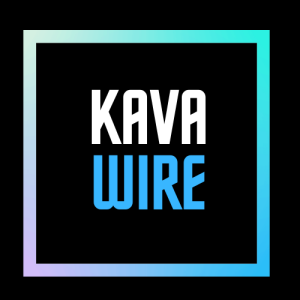The recent unveiling of Hong Kong’s LEAP Digital Assets Policy Statement 2.0 was met with significant excitement and expectation. The Hong Kong government has pledged to establish a comprehensive regulatory framework aimed at consolidating licensing processes while broadening the range of tokenized offerings available. However, amidst this enthusiasm lies a pivotal development: Beijing’s announcement regarding the liquidation of seized digital currencies through licensed exchanges in Hong Kong. Although these events may appear unrelated, they are, in fact, part of a meticulously crafted strategy by China to elevate Hong Kong as a preeminent virtual asset center and a key player in the global market for cryptocurrencies.
A Unified Strategy: Hong Kong’s Role in the Virtual Asset Landscape
Hong Kong is set to emerge as the primary hub for virtual assets in the region, while simultaneously acting as a crucial element in China’s broader global ambitions. This strategy positions Hong Kong as a protective mechanism for cryptocurrency, a conduit for market pricing, and a strategic command center for managing cryptocurrency liquidity on behalf of the People’s Republic of China (PRC).
Establishing Regulatory Foundations
On the surface, the LEAP policy seems to dominate headlines, but a deeper analysis reveals its true implications. The real strength of these regulatory decisions lies in the liquidity boost that will result from China’s plans to liquidate confiscated digital assets. This approach will provide Hong Kong with unparalleled influence over the global virtual asset landscape.
The regulatory groundwork for Hong Kong’s framework can be traced back to 2022, when the Anti-Money Laundering and Counter-Terrorist Financing Ordinance (AMLO) was amended. This legislation formalized the inclusion of virtual asset trading platforms (VATPs) under the jurisdiction of the Securities and Futures Commission, aligning with the standards set by the Financial Action Task Force (FATF) and marking a significant legislative milestone for virtual assets.
Another landmark piece of legislation is the Stablecoin Ordinance, which is scheduled to take effect on August 1, 2025. This new law establishes a dedicated licensing framework for fiat-backed stablecoin issuers, overseen by the Hong Kong Monetary Authority (HKMA), which will enforce strict reserve requirements, redemption protocols, and comprehensive risk management strategies.
The LEAP Digital Assets Policy Statement 2.0, introduced in June 2025, further enhances Hong Kong’s regulatory architecture. This initiative consolidates licensing, broadens the array of tokenized products, and promotes cross-sector collaboration and talent development. LEAP aims to be more than just a compliance measure; it seeks to position Hong Kong as a leader in the global digital asset arena, demonstrating its readiness to engage with the future of digital currencies.
The Essential Role of Liquidity
While laws and regulations are critical, it is liquidity that ultimately drives market dynamics. Liquidity serves as the essential lifeblood of any financial ecosystem. Without it, even the most advanced markets can struggle to maintain stability. Observations of the London Stock Exchange illustrate this point clearly.
Under China’s overarching strategy, Hong Kong is positioned to leverage liquidity in ways that differ significantly from the United States, which maintains a substantial Strategic Bitcoin Reserve under a strict “hold-only” policy. By channeling seized digital assets into Hong Kong’s exchanges, China will transform these assets into valuable market liquidity, enabling Hong Kong to influence cryptocurrency pricing, stabilize markets, and react to geopolitical developments as needed.
This strategy mirrors how China leveraged its control over rare earth metals during trade negotiations with the U.S.; by managing crypto liquidity, it holds significant sway over the value of American crypto reserves. This represents a subtle but profound shift in power dynamics, where a single nation’s control over liquidity flows can dictate market narratives and outcomes.
Strategic Implications and Responses
This ambitious strategy significantly reshapes the existing power balance in the cryptocurrency arena. Hong Kong is likely to gain a competitive edge in attracting institutional investments and enhancing market liquidity, capitalizing on its unique position as the facilitator of China’s crypto liquidation strategy. Moreover, as Hong Kong aims to ascend to new heights of global leadership in digital assets, China will gain a potent geopolitical instrument, capable of manipulating global cryptocurrency valuations through strategic liquidity management.
This situation presents a dilemma for the United States: Should it maintain its passive approach, accumulating crypto reserves without substantial market influence? Or might it need to develop new strategies to counterbalance Hong Kong’s increasing dominance over crypto liquidity? Understanding this complex interplay is crucial for stakeholders across the market, including legal experts, risk professionals, and lawmakers. Compliance frameworks must adapt to address the heightened scrutiny and risks associated with liquidity-driven market fluctuations, while risk management strategies should be designed to anticipate volatility stemming from strategic liquidity initiatives.
Ultimately, the key to thriving in Web3 markets hinges on effective liquidity management and access to information. While Hong Kong’s LEAP policy captures much of the media spotlight, the genuine strategic maneuver lies in China’s approach to crypto liquidation and liquidity injection. This initiative will empower Hong Kong to act as a dynamic pricing mechanism, wielding liquidity as a strategic asset that few jurisdictions can rival.
In contrast, the U.S. finds itself restricted by a rigid reserve policy that limits its ability to influence market liquidity or respond adeptly to price fluctuations. Meanwhile, Singapore, despite a well-developed regulatory environment, faces challenges related to market scale, and Dubai, while ambitious, grapples with fragmented regulations and high operational expenses that impede rapid growth. Hong Kong truly “holds all the cards” in this scenario, benefitting from China’s strategic control over liquidity.
This unique blend of an established regulatory framework, direct access to the world’s second-largest cache of cryptocurrencies, and the capacity to deploy that liquidity effectively provides Hong Kong with a significant advantage within the Web3 ecosystem. It stands ready to influence global crypto prices in real time, attract institutional investors, and foster innovation within a stable and welcoming environment for investors.
In this contest, liquidity serves as the ultimate leverage, and Hong Kong possesses the means to control it. Grasping this layered strategy is vital for those wishing to navigate the swiftly changing digital asset landscape with insight and foresight, as failure to do so could lead to being outmaneuvered.

